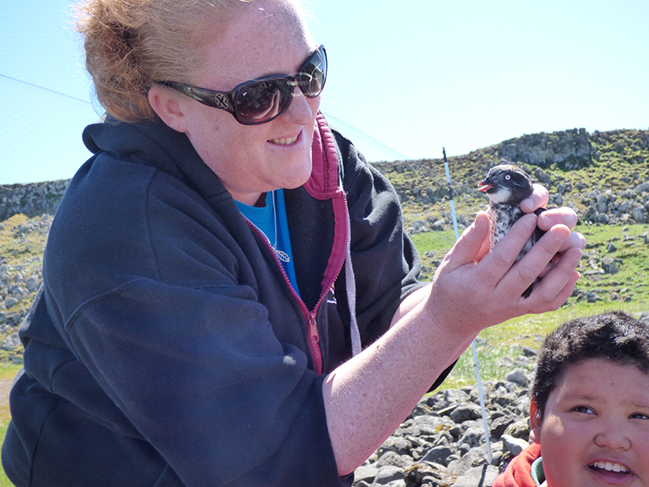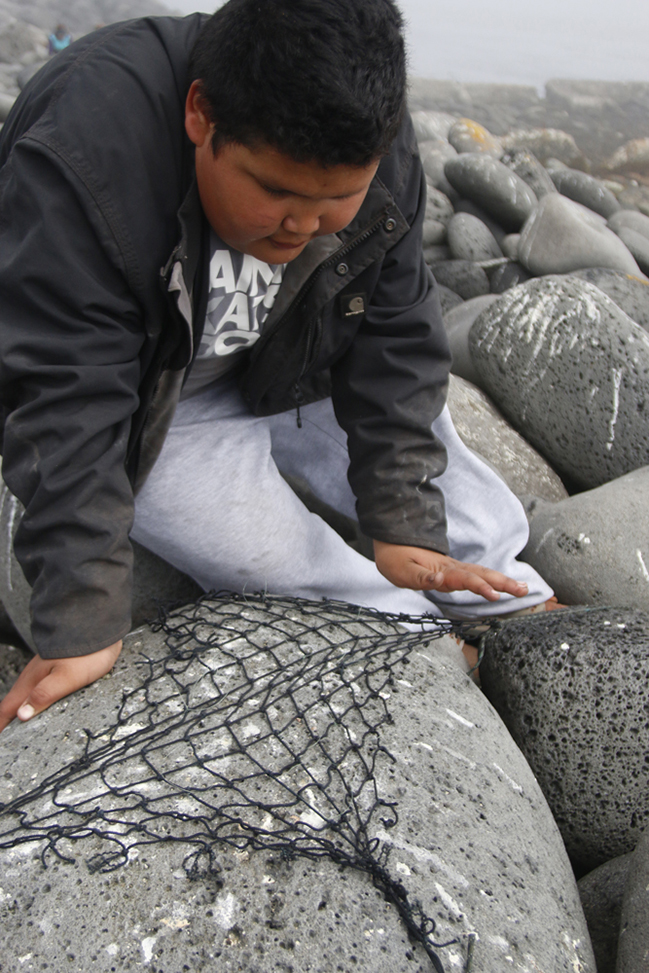Veronica Padula and Misty Libby from the University of Alaska, Anchorage (UAA) are on St. Paul this summer studying contaminants in birds. Chauncey (one of our Seabird Camp interns) has been assisting them with some of the field work, and Veronica and Misty are also helping out with Seabird Camp this week.
Here is a letter from Veronica describing why they are catching birds, and some photos of the team catching Least Auklets this past weekend.
22 June 2015 – First Day of Camp!
Hi everyone! It’s Veronica. I get to spend my whole summer doing research on St. Paul Island with my friend, Misty Libby. We are interested in all things having to do with birds, but our primary objective is to see if birds on St. Paul Island are exposed to harmful man-made chemicals – what we call contaminants – and if those chemicals are getting into the birds’ bodies. We are particularly interested in two types of contaminants, and will be collecting samples from many birds throughout the summer to take back to our lab in Anchorage for analysis to see if we can detect those chemicals.
The first type is a group of chemicals called phthalates (pronounced THALATES), and these chemicals are found on plastics. As humans, we use lots of things that are made of plastic, and if we do not dispose of plastic garbage properly, it ends up polluting the environment. Animals like birds often mistake pieces of plastic for food, and will eat those pieces of plastic or feed them to their chicks. It might be hard for us to understand, because as humans we know the difference between something that is made of plastic and real food. But consider plastic bags – a plastic bag floating under the water often takes on a shape like a jellyfish, and many birds and other animals have been found with plastic bags in their stomachs because they mistake them for jellyfish. If we can detect phthalates in samples collected from birds on St. Paul, we will be better able to say that plastic pollution is impacting them.
The other type is a group of chemicals called persistent organic pollutants (POPs). Most POPs are man-made, and are currently or were in the past used as pesticides, solvents, pharmaceuticals, and industrial chemicals. The problem with POPs is that they are long-lived chemicals, meaning that once they pollute the environment they are hard to get rid of because they do not break down easily. They are very harmful to all animals, including humans, and so it is important for us to know if our local environments contain them. In addition, plastic waste can act like a sponge and absorb POPs, meaning that when a bird eats a piece of plastic, it can also be exposed to these chemicals.
So how are we collecting samples from birds to look for these chemicals? That is a really good question – this is our first full field season on the island, which means we are experimenting with lots of different ideas. Our main goal is to collect feathers from as many birds as we can, so we are trying lots of different ways to catch those birds. Seabird summer camp kids are helping us with two methods: mist nets and noose mats. Mist nets are made of fine mesh (think of gill nets to catch fish, but in the air instead of under water). We pick a spot where lots of birds are flying back and forth and set up the net by attaching it to poles and stretching the poles out so the net is in the air but difficult to see, in hopes that birds will fly into the net and get caught. We then carefully remove birds from the net, pluck a few feathers from their breast and set the birds back on their way. The other method of catching birds is through noose mats, which essentially catches their feet so they will not fly away. Although we have not had success with the noose mats yet, we think they’ll work in the coming weeks!
On top of all that, we get to be part of Seabird Summer Camp, and we are totally stoked to be hanging out with Tonia, Kendra, Ram and all the kids that are participating. We love sharing our love of the birds with everyone, and camp is going to be a blast!



